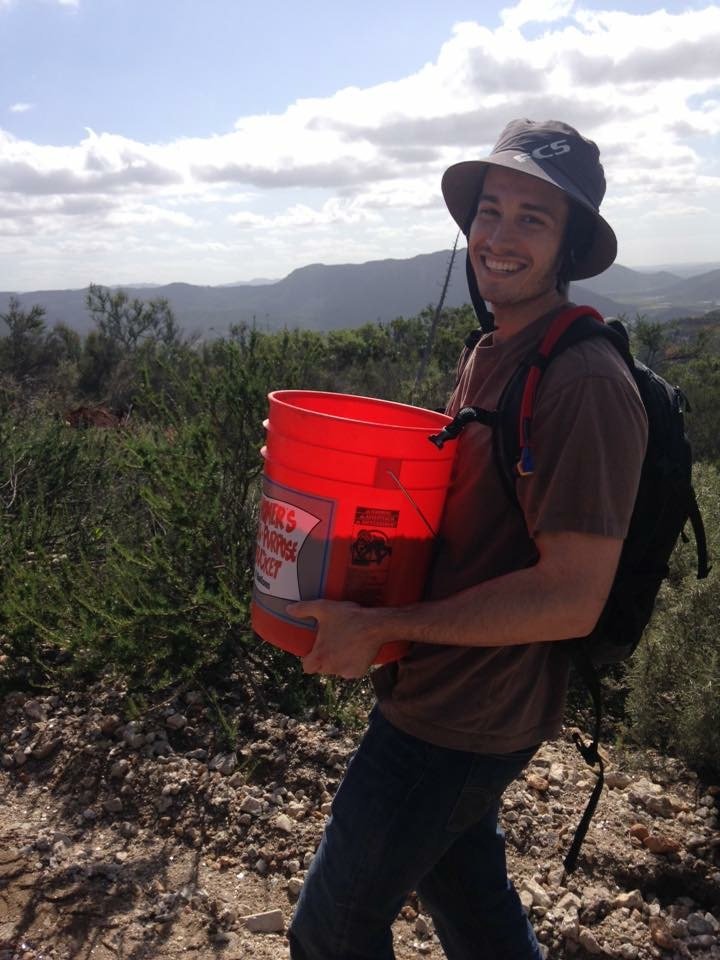Pala's Gem Producing Pegmatites in Southern California
Did you know that San Diego County is an important locality for several highly desirable mineral species and famous for producing some of the finest gem quality Rubellite Tourmaline ever uncovered?
Just under an hours drive north of downtown San Diego (off the 15 FWY & HWY 76) you will find yourself at the Pala Indian Reservation where you will find real mines that are actively mining a full rainbow of beautiful gemstones. The Pala Pegmatite District in northwestern San Diego County, California has been a well known source of lithium minerals that has been celebrated by scholars and collectors for over a century. At least 400 pegmatite dikes are exposed in an area of about 13 square miles but only a couple produce gem quality material.
Let’s answer some of the most common questions we have encountered:
Geologically speaking, how did the San Diego region form?
The dominant rocks of the area were a part of the Southern California Batholith that likely formed during the Cretaceous age. (Think T-Rex’s!)
A batholith is is an exposed solidified pluton which is a magma chamber that formed deep under the Earths’s surface.
What are Pegmatites and when did they form?
Pegmatites form during the final stage of magma chamber crystallization. Most pegmatites have a composition that is similar to granite with abundant quartz, feldspar and mica. Larger crystals are usually attributed to a slow rate of crystallization but the chemistry of the minerals present is also a factor. During the early states of a magma’s crystallization, the melt usually contains a significant amount of dissolved water and other volatiles such as chlorine, fluorine and carbon dioxide. Water is not removed from the melt during the early crystallization process, so its concentration in the melt grows as crystallization progresses. Eventually there is an overabundance of water, and pockets of water separate from the melt and superheated pockets form. It is in these pockets where we can sometimes find our gem quality material.
What are these big lumpy rocks that are scattered all over the hillsides off of the 15 freeway in North County San Diego?
These large boulders littering the hillsides are eroded Granite from the Southern California Batholith.
What gemstones form in San Diego and why do we see these gems commonly form together?
This region is rich in Manganese and Lithium. These elements are responsible for a lot of the pink coloration we will be seeing in our finds.
Tourmaline:
Na(Mg, Fe, Al)3Al6{Si6O18](BO3)3(O, OH, F)4. (Sodium+Manganese+Aluminum+Silicon+ Boron+Oxygen+Hydrogen)
Rubellite/Pink has added Manganese.
The deeper pinks come from having greater concentrations of manganese present during formation.
Kunzite Spodumene:
LiAlSi2O6 (Lithium+Aluminum+Silicon+Oxygen+Manganese).
Pink color caused by presence of Manganese.
Named for George Frederick Kunz (1856-1932), American mineralogist with Tiffany & Co.
Morganite Beryl:
Be3Al2Si6O (Beryllium+ Aluminum+Silicon+Oxygen+Manganese)
Pink color caused by presence of Manganese.
Named after the American banker and collector J.P Morgan.
Quartz:
SiO2 (Silicon+ Oxygen)
Colorless to optically clear Quartz and Smokey Quartz are common for the area.
Lepidolite:
A lithium rich pretty purple macrocrystalline rock.
Ore grade material.
Lithium is used in many things such as anti-depressants, batteries, other industrial uses.
A snapshot of what we found at the Pala Chief fee dig.
How long have we been mining in this area?
Commercial mining began in the 1870’s peaking from the years 1900 to 1922. By 1947 there was an estimated total of 23,480 short tons of lepidolite, 2,480 pounds of tourmaline, and 1,325 pounds of gem spodumene. Small amounts of amblygonite, other varieties of beryl, feldspar, and quartz also have been mined in this region.
What connection does China have to the mines of San Diego?
The Chinese Dowager Empress Tz'u Hsi was obsessed with the finest quality of Rubellite Tourmaline in the late 1800’s so she stationed personal buyers in this mining district to ensure that she had first choice of the finest material that came out of what was seen as the finest source at the time. She then had the material brought back to china to be cut and fashioned into luxury items. Most of this material is still in China today.
Are there still more pegmatites out there waiting to be worked or discovered?
No one person has the exact answer on this one but I’m told there is still plenty to be discovered in our mountains by local miners and they will not stop searching for their next big find anytime soon.
Can I visit a gem producing mine here in San Diego County?
You can visit the Oceanview/Pala Chief Mine Complex and pay to have the opportunity to dig in their tailings or scout their hillsides for natural gemstones such as Tourmaline, Morganite, Kunzite, Hiddenite, and Quartz among other fascinating finds like lithium rich Lepidolite. Visit https://digforgems.com to explore their options to get your hands dirty.
Steven of Team GSB is shown carrying a bucket of rocks that he will sift through in hopes of finding a gemstone!
Additional Information and Resources:
https://www.palaminerals.com/pala_pegmatites.php
Gems &Geology Summer 1984: Gem Bearing Pegmatites: A Review By James E. Shigley and Anthony R, Kampf
http://www.sdnhm.org/archive/research/geology/geo_intro.html



